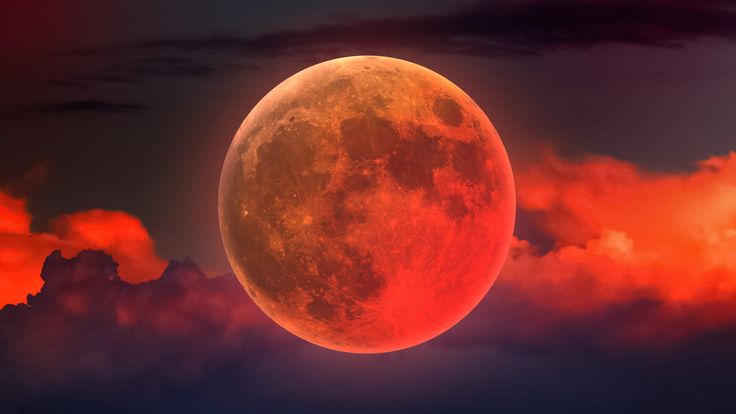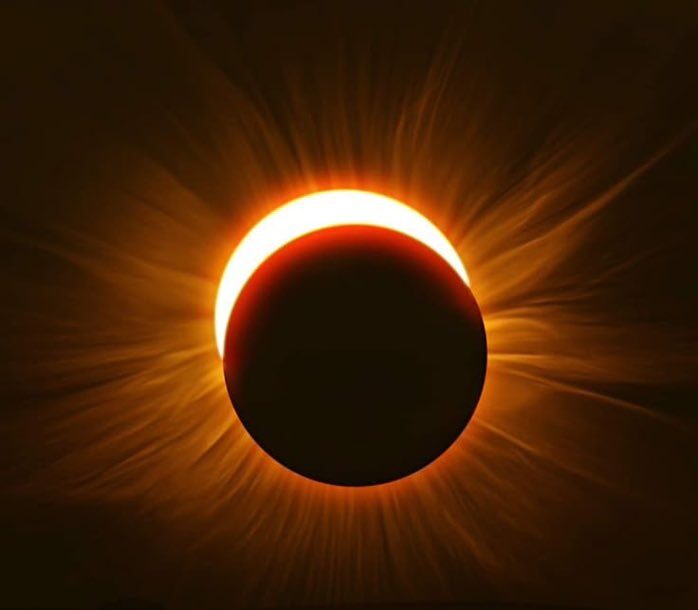On 7 September 2025, the night sky will treat millions of skywatchers to a breathtaking celestial spectacle—a Total Lunar Eclipse, also known in India as Chandra Grahan. A lunar eclipse can be viewed from practically anywhere the Moon is above the horizon, unlike a solar eclipse, which can only be observed from specific, limited routes on Earth. This makes the upcoming eclipse one of the most awaited astronomical events of 2025, promising a night of awe, wonder, and scientific curiosity.
This article explores India timings, global visibility, the science behind the eclipse, myths and beliefs, and a complete safe viewing guide, giving you everything you need to know to enjoy this once-in-a-year phenomenon.
What is a Total Lunar Eclipse?
When the Earth passes directly between the Sun and the Moon, its shadow is projected onto the lunar surface, causing a lunar eclipse. The Moon fully enters the umbra, the darkest area of Earth’s shadow, during a total eclipse.
But instead of disappearing entirely, the Moon often takes on a crimson or coppery tint, hence the nickname “Blood Moon.” As sunlight passes through Earth’s atmosphere, it bends longer wavelengths (red) and scatters shorter wavelengths (blue) onto the Moon’s surface.
When you gaze at the Moon on September 7, you are effectively seeing the filtered light of the Earth’s dawn and sunset projected onto it.
The Schedule of India’s Total Lunar Eclipse for September 7, 2025
According to astronomers, the total lunar eclipse will be visible across most parts of India, making it a rare treat for Indian skywatchers. The following is the complete timeline (in Indian Standard Time, or IST):
- Penumbral Eclipse Begins – 04:45 PM IST
- Partial Eclipse Begins – 06:02 PM IST
- Total Eclipse Begins – 07:15 PM IST
- Maximum Eclipse – 07:55 PM IST
- Total Eclipse Ends – 08:35 PM IST
- Partial Eclipse Ends – 09:48 PM IST
- Penumbral Eclipse Ends – 11:05 PM IST
This means that the entire total eclipse phase will be visible from India, provided the skies are clear. Cities like Delhi, Mumbai, Kolkata, Bengaluru, and Chennai will all have front-row seats to the spectacle.
Global Visibility: Who Can Watch the Eclipse?
The 7 September 2025 lunar eclipse is not limited to India. In fact, it will be visible from many parts of the world.
Fully visible: Africa, Europe, Asia, Australia, and Eastern South America.
Partially Visible: Western South America and parts of North America (during moonrise or moonset).
Not Visible: Small portions of North America (especially western regions).
For stargazers in Europe and Africa, the eclipse will occur late at night, while in Asia and Australia, it will be comfortably visible during evening hours.
How to Watch the Eclipse Safely
In contrast to solar eclipses, lunar eclipses are entirely safe to observe with the unaided eye. No filters or safety glasses are required. Here’s how to make the most of it:
1. Find a Clear Spot – Choose an open area away from city lights for the best visibility.
2. Although they are not necessary, bringing binoculars or a telescope will let you see the Moon’s surface in greater detail as it gets darker.
3. Use a Camera or Smartphone – A tripod-mounted DSLR or a modern smartphone can capture stunning eclipse photos.
4. Stay Patient – The total phase lasts around 1 hour and 20 minutes, giving ample time to enjoy different stages.
Tip: Apps like Stellarium, SkySafari, or Google Sky Map can help track the Moon’s position in real time.
Cultural and Historical Significance in India
In India, lunar eclipses have always been associated with myths, traditions, and rituals. Ancient texts often describe eclipses as cosmic events linked to Rahu and Ketu—the shadow planets in Hindu mythology.
- Many people observe fasts or avoid eating during the eclipse, believing it to be inauspicious.
- Temples sometimes close their doors during the eclipse period.
- After the eclipse, households often perform cleansing rituals and prayers.
While science explains the eclipse as an astronomical alignment, the cultural layers add depth to how communities perceive and experience it.
Why This Eclipse is Special
The 7 September 2025 total lunar eclipse stands out for several reasons:
1. Global Visibility – It will be visible from multiple continents, allowing millions to witness it simultaneously.
2. Convenient Timings in India – Occurring in the evening, it’s perfect for family viewing.
3. Long Totality – With more than an hour of total eclipse, observers will get plenty of time to watch and photograph it.
4. Blood Moon Effect – The atmospheric conditions may give the Moon a deep red or orange tint, making it visually dramatic.
Capturing the Perfect Eclipse Photo
This eclipse is a fantastic chance for photographers.
Smartphones: Use night mode, steady your device, and zoom moderately.
DSLR Cameras: Use a telephoto lens (200mm or more), ISO 400–800, and a tripod.
Astrophotography: Capture a time-lapse sequence from partial phase to totality for a breathtaking effect.
Pro Tip: For creative photographs, consider lining up the eclipse with a landmark, such as a temple, tree, or skyline.
Scientific Value of Lunar Eclipses
Lunar eclipses aren’t just beautiful—they’re scientifically important.
Astronomers use eclipses to study Earth’s atmosphere, since the red tint comes from filtered sunlight.
Lunar eclipses help confirm the sphericity of Earth, an observation dating back to Aristotle.
Space scientists compare the Earth’s shadow on the Moon with data from other planets to understand exoplanetary atmospheres.
Thus, every eclipse contributes to both science and human understanding of the cosmos.
Do’s and Don’ts for Eclipse Day
✅ Do enjoy it with family and kids—it’s a great educational moment.
✅ Do use binoculars or telescopes for detailed viewing.
✅ Do follow cultural traditions if they matter to you.
❌ Don’t believe in harmful myths (like harmful rays affecting food—scientifically disproven).
❌ Don’t stare through city smog or haze—find a clear location.
❌ Don’t expect the Moon to vanish—the “Blood Moon” glow will remain.
Looking Ahead: Future Lunar Eclipses
If you miss this one, don’t worry—astronomy always has something in store. After 7 September 2025, more lunar eclipses are lined up in the coming years. But since total eclipses are rarer than partial ones, this is an opportunity you won’t want to miss.
A Night to Remember
The Total Lunar Eclipse on 7 September 2025 is more than just a sky event—it’s a union of science, culture, and wonder. For India, it’s a rare chance to see the entire sequence unfold in the evening sky, making it accessible to all age groups.
So, mark your calendars, prepare your cameras, and step outside to witness the Moon as you’ve never seen it before—bathed in the mysterious glow of Earth’s shadow.
Related News: Read More




